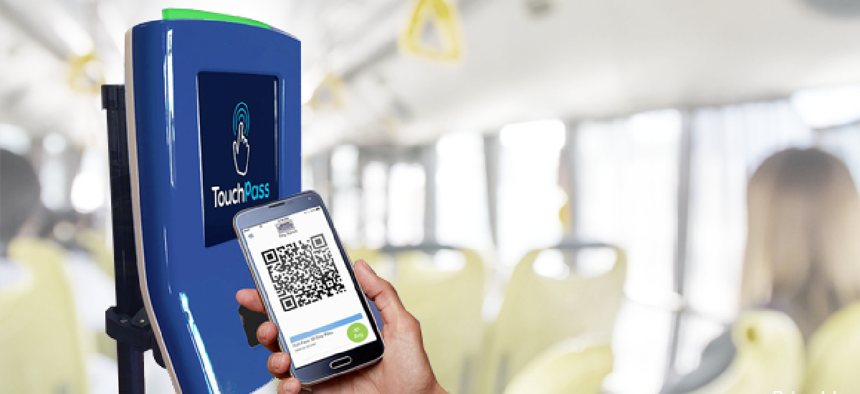Oregon transit agency tries fare collection as a service


Connecting state and local government leaders
The cloud-based TouchPass system offers small to mid-size transit agencies an easy way to upgrade to electronic fare collection.
When it comes to bus fare, coins are out, cards are in. And not just cards -- smartphone apps are being used to pay for public transit.
Electronic fare collection for transit is nothing new, but the expense of setting up the IT infrastructure has pushed it beyond the reach of many mid-sized transit organizations. A new option called TouchPass is trying to change that.
Developed by California-based Delerrok Inc., TouchPass is a cloud-based electronic fare collection system that charges organizations a fee for every transaction. The subscription service saves cities the cost of setting up the hardware, software development, maintenance and upgrades. Fees for the subscription-based service scale as ridership changes.
The Rogue Valley Transportation District in Medford, Ore., piloted this technology a few months ago and is now using it in day-to-day operations. RVTD General Manager Julie Brown said other options were just too expensive for the organization, which has 23 fixed route vehicles serving 1.3 million rides a year in seven small cities in Oregon.
“The biggest thing about those [electronic fare collection] systems is they are proprietary,” Brown told GCN, “so you are always at their mercy for software updates, you’re looking at licensing fees that, quite frankly, small urban agencies could never even consider -- we’re talking millions of dollars -- and then annual fees that are, I’d say, a quarter of a million dollars a year.”
So when RVTD put out a request for proposal to replace its fare collection system, officials got responses from companies offering those high-cost services. But RVTD Associate Planner Jon Sullivan heard about TouchPass and contacted the company.
Sullivan said installation was a breeze. “We didn’t have to purchase any software licenses or computers or servers,” he said. The bus stations already had the wireless access points the system needed. The only installation required was the reader on the buses -- that required power, Ethernet through the dash and modems to communicate with the 4G network.
“We’re talking a matter of about a week of labor to get those reader installed,” he said.
About 35 percent of RVTD ridership is currently using TouchPass, which allows riders to pay with either a fare card or their smartphone, Sullivan said. Riders can put funds in their transit accounts through a web-based interface, which means RVTD did not have to invest in fare vending machines. Riders without internet access can buy and put money on fare cards at brick-and-mortar locations.
Besides the convenience for passengers, the new TouchPass system gives RVTD access to more ridership data than its old setup. Now, RVTD can have the location, route, time and date of trip transactions. This data, especially information on the origin of a trip, “is really coveted in our industry,” Sullivan said.
Sullivan said RVTD noticed some obvious benefits beyond price -- like the ability to check the account of a rider who says he’s been denied entry, or the rider’s ability to pay online.
RVTD has not switched all its ticketing options over to TouchPass yet, but it plans to do so by this summer.
NEXT STORY: More AWS services get FedRAMP High authorization




